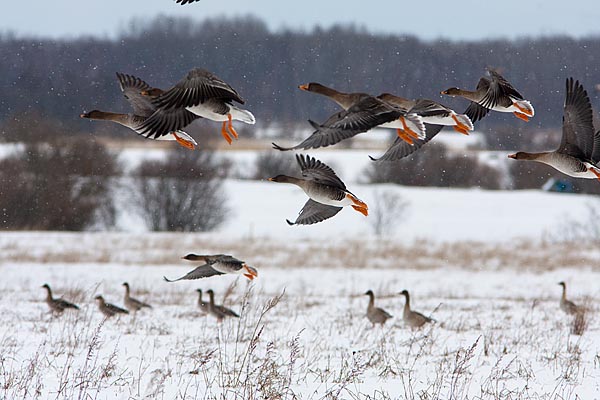Bean goose Rabahani Anser fabalis
Bean geese do not stay in Estonia, their breeding territory begins at the marshes of central Finland and from there extends towards north. During the spring migration in March-April tens of thousands of bean geese can make a stop in Estonia however – for feeding, waiting for warmer weather in the breeding area or waiting for suitable migrating winds. It does not do to be late to the breeding territories. In the flight view there are the usual ”goose triangles” but sometimes they also fly in a long line at each others’ tails .
Grey geese can also be seen but they arrive in small groups or even by pairs.
Compared to grey geese the flight image of bean geese leaves a ”dark” impression with a brown head and neck, greyish-brown - but sometimes also completely brown - wings with lighter patches (note that for grey geese the entire front edge of wings is light), the plumage of the underbody greyish-brown. Body length about 80 centimetres, the wing span up to twice as long and weight about 3 kilos.
When you notice a goose flock busy in a field, a good identification characteristic is the beak of bean geese – the central part of the longer beak half is noticeably orange, the base and tip black. Legs nicely orange, iris dark brown.
There are many good observation areas: the Audru, Sangla, Aardla and Räpina polders, also the Vooremaa lakes and the coastal areas of Läänemaa, Matsalu National Park, Silma Nature Protection area…
Bean goose observations: LINK



